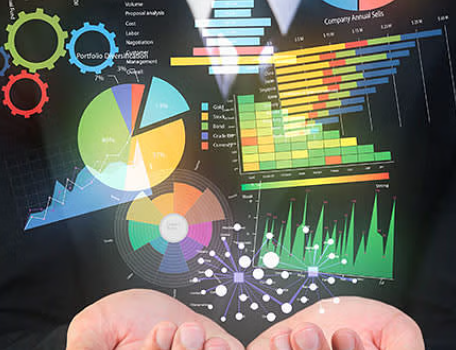
In today’s data-driven world, businesses are constantly collecting vast amounts of data, ranging from customer behaviors to operational metrics. However, many companies still struggle to make sense of it all. Traditional data analysis methods, such as manually sifting through spreadsheets, often fail to provide the actionable insights needed to make quick, informed decisions. The result? Missed opportunities and a slower response to market changes.
But what if there was a way to transform how data is analyzed and interpreted, allowing businesses to make faster, more accurate decisions? Enter advanced data visualization techniques. These powerful tools do more than just present data; they make complex information easier to understand and help you spot trends, patterns, and insights faster than ever before.
Why Traditional Data Analysis Is Falling Short
The reason why traditional data analysis is no longer enough lies in the sheer volume and speed of data generated today. Businesses are overwhelmed with data from various sources, including customer interactions, online behavior, and operational metrics. As a result, relying on outdated methods like spreadsheets or static reports is no longer feasible, especially when decisions need to be made quickly.
A 2023 Gartner survey found that 78% of executives make critical decisions under time pressure with insufficient clarity, not because data is unavailable, but because it isn’t presented in an actionable format. Furthermore, humans process visual data 60,000 times faster than text. So, when decision-makers can instantly visualize data trends, they move from asking “What’s happening?” to “What should we do about it?”
Visualization Technique #1: Interactive Dashboards for Real-Time Insights
Interactive dashboards are one of the most impactful tools for business decision-making. Unlike static reports, dashboards allow users to explore data in real time. They provide an interactive interface that enables users to drill down into specific metrics, compare performance across different categories, and make quick decisions without needing technical expertise.
For instance, Columbia Sportswear transformed their inventory management process with interactive dashboards. Managers could now instantly see inventory turnover rates, identify slow-moving items, and make informed decisions within minutes instead of days. As a result, they improved their responsiveness to trends by 64%, reduced inventory costs by 12%, and saw better availability of high-demand products.
Dashboards offer several key benefits:
- Real-time Data: Dashboards connect directly to data sources, ensuring that decisions are based on current, not outdated, information.
- Cross-Functional Visibility: They display interrelated metrics across departments, helping users understand the connections between different areas like sales, inventory, and customer service.
- Customizable Views: While offering flexibility for users, dashboards maintain consistent data definitions to ensure accurate decision-making across teams.
Visualization Technique #2: Geospatial Analysis for Location-Based Insights
Geospatial analysis is an incredibly powerful tool for businesses that rely on location-based data. By visualizing geographic data on maps, businesses can uncover insights that are often hidden in traditional reports. Geographic patterns, such as regional customer preferences or supply chain bottlenecks, can be more easily identified using geospatial visualizations.
For example, Walgreens used geospatial visualization to optimize its store expansion strategy. By analyzing factors like population density, competitor locations, and customer traffic patterns, they were able to make smarter decisions about where to open new stores. This approach improved new store performance by 22% compared to traditional methods.
Geospatial visualization is not limited to retail. It can be applied to:
- Supply Chain Optimization: Identifying inefficiencies in distribution networks.
- Customer Segmentation: Visualizing customer concentration and targeting strategies by region.
- Risk Management: Assessing geographic risks, such as disaster-prone areas or market saturation.
Visualization Technique #3: Predictive Analytics for Forecasting the Future
Predictive analytics visualization focuses on forecasting future events, trends, or behaviors based on current and historical data. These visualizations help businesses anticipate potential outcomes, allowing them to make more proactive decisions.
Delta Airlines improved its maintenance operations by using predictive analytics visualizations. Rather than relying on scheduled maintenance or reacting to failures, Delta used real-time sensor data from aircraft components to predict potential part failures. This approach reduced maintenance delays by 20%, optimized inventory management, and saved an estimated $100 million annually.
Predictive visualizations provide several advantages:
- Decision Trees: Visualize different scenarios and the outcomes they may produce, helping decision-makers weigh options.
- Probability Distributions: Instead of a single forecast, show the range of possible outcomes and their likelihood.
- Influence Diagrams: Highlight the relationships between different variables to identify which factors influence outcomes the most.
Visualization Technique #4: Network Visualizations to Understand Relationships
In today’s interconnected business world, understanding relationships—whether between customers, products, or suppliers—is key to success. Network visualizations map out these relationships, revealing hidden connections and helping businesses uncover valuable insights.
Procter & Gamble applied network visualization to their product innovation process, discovering unexpected relationships between products that led to better product placement and bundling strategies. These insights helped the company generate $50 million in additional revenue.
Network visualization is used in various applications, such as:
- Organizational Analysis: Identifying communication bottlenecks and collaboration gaps.
- Supply Chain Management: Mapping supplier networks to spot potential risks.
- Influence Mapping: Understanding social media conversations and identifying key influencers.
Visualization Technique #5: Data Storytelling for Effective Communication
Data storytelling combines data visualization with a narrative to help stakeholders understand and act on insights. By presenting data in a story format, you can make complex information more engaging, memorable, and persuasive.
Netflix used data storytelling when pitching the idea for “House of Cards.” Rather than presenting raw viewership data, they created a visual narrative that showed how the show appealed to multiple audience segments, making a compelling case for the investment. The visual story not only communicated data but also emotionally resonated with decision-makers, ultimately securing the project.
Effective data storytelling uses:
- Progressive Disclosure: Gradually revealing information to guide understanding step-by-step.
- Visual Consistency: Maintaining a consistent format to highlight key insights.
- Emotional Anchoring: Using color and annotations to create an emotional connection to the data.
Implementing Data Visualization in Your Organization
To successfully integrate these visualization techniques, organizations need to invest in data quality, user-friendly visualization tools, and training for employees. Implementing data visualization should start with high-impact use cases where the benefits are immediately visible, such as improving decision-making in marketing or optimizing supply chain management. As adoption grows, businesses can expand visualization efforts across different departments, further improving decision-making speed and accuracy.
Conclusion: The Future of Business Decisions
As the business world becomes more data-driven, the ability to quickly turn data into actionable insights is a key competitive advantage. Data visualization techniques are not just about making data look good—they fundamentally change how organizations process information, recognize trends, and make decisions. By embracing these techniques, businesses can gain the “decision velocity” they need to stay ahead of competitors and navigate the fast-changing market landscape.













